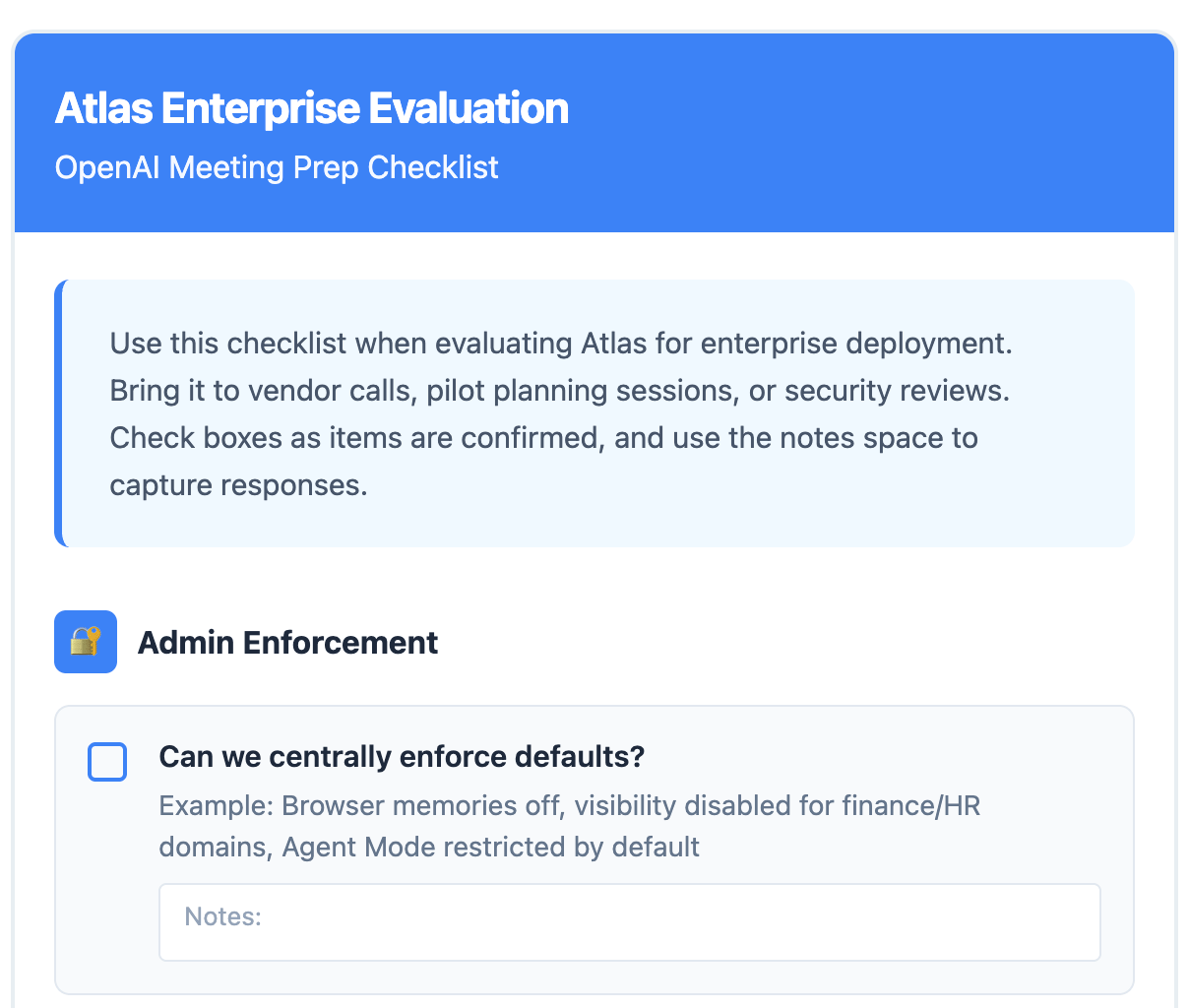- The Atomic Builder
- Posts
- The Browser War Just Went AI-Native
The Browser War Just Went AI-Native
Atlas remembers everything you read and acts on your behalf. Ready or not.
Last week, I wrote about moving agents from "can we?" to "should we?" - the gap between demos and production. Well, that gap just got narrower. Three AI-native browsers launched recently, and one of them might change how you work.
Atlassian acquired DIA (via The Browser Company). Perplexity shipped Comet, their research-first browser. And last week, OpenAI launched Atlas, a ChatGPT-native browser that remembers your work and acts on your behalf.
I’ll explain the shift happening right now, and guide you on what to do next.
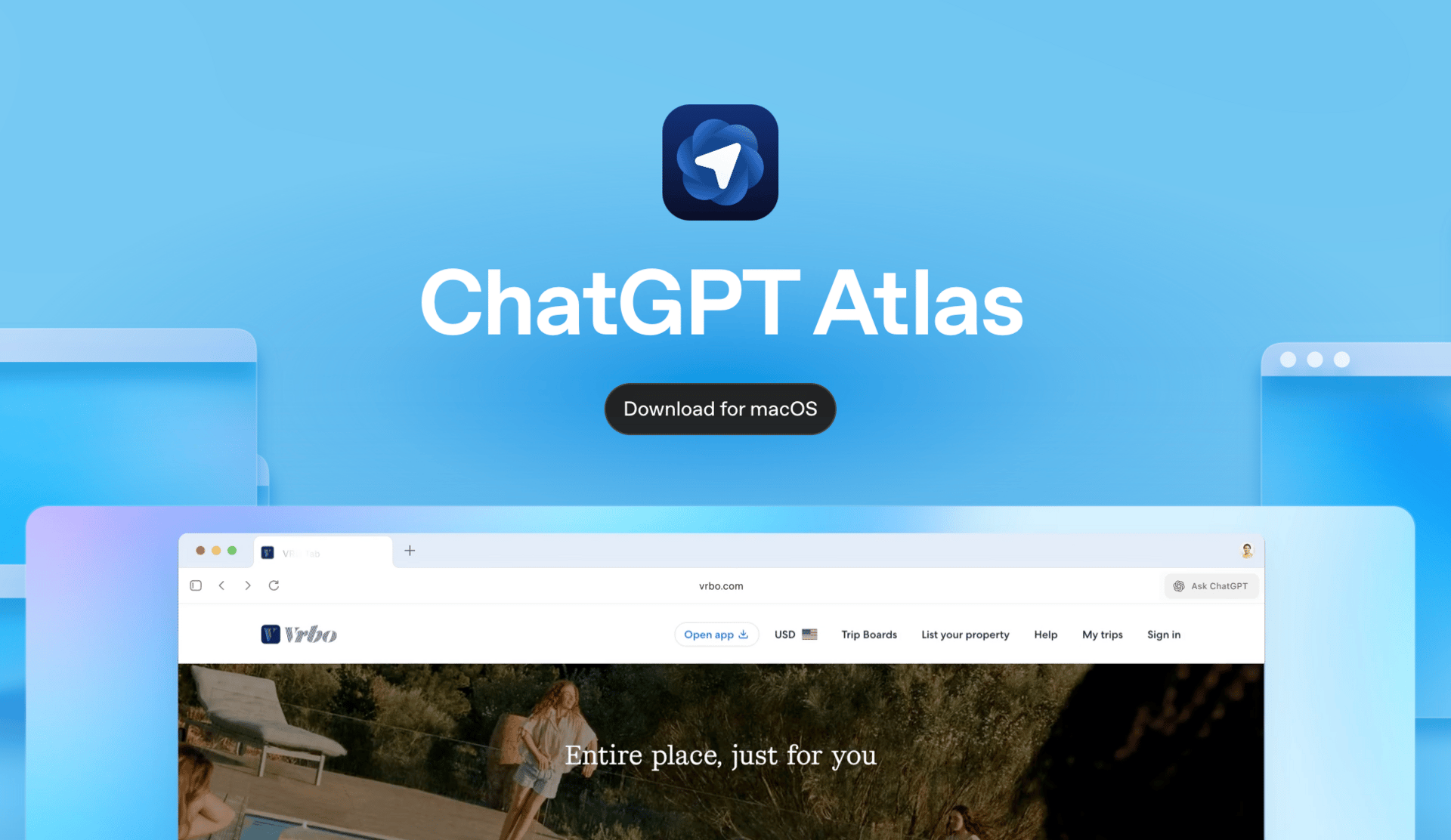
Atlas, by OpenAI (built on Chromium, Google technology)
What Atlas Actually Does
You’ve (probably) been using Chrome or Edge for the last several years. How’s Atlas different? Here's what matters:
Chat-first interface. ChatGPT sits beside every page you visit. No more copy-paste purgatory... You can summarise, compare, extract, and rewrite - all inline.
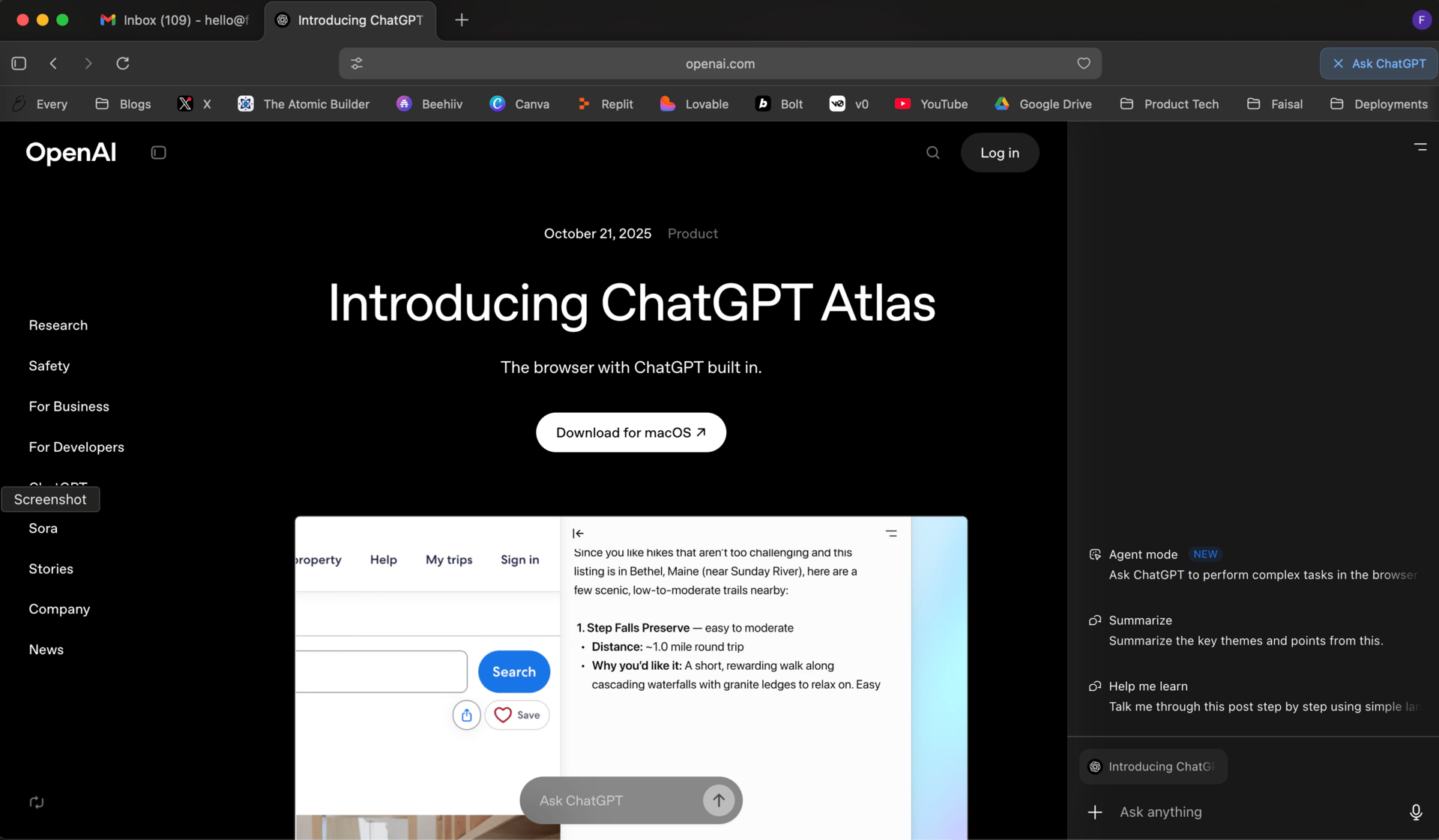
Chat fuelled by context
Agent Mode (preview). Point it at a task and it clicks, types, and navigates for you. Building comparison tables, filling forms, assembling research. It pauses on sensitive steps and waits for your approval.
Browser Memories (opt-in). Ask it to "resurface the AI jobs I viewed last week" and it pulls from your browsing history. You control what gets remembered and what doesn't.
Atlas makes memory a feature.
You can literally chat with your browsing history.
Right now it's Mac only. Windows and mobile are next.
The near-term win isn't full autonomy, yet, likely not for a while, it's context. Atlas collapses the gap between reading something, thinking about it, and drafting a response.
Reality Check: What Works Today vs. What's Coming
Let me be direct about what actually works right now:
Memory works. You can chat with your browsing history, ask it to resurface pages from last week, and get summaries. Turn it off anytime. Use Incognito if you don't want tracking.
Agent Mode is promising but rough. It clicks, types, and navigates on your behalf - but it's clunky. You need to supervise it. There are real security risks (prompt injection, unintended actions). The speed is sluggish. A single task can feel slower than doing it yourself. But here's where it could pay, think about the vision of running multiple agent tasks in parallel while you focus on other things.
It feels slow alone, fast in parallel. Spin up five tasks to see the power, then get back to real work.
This is a turning point in how we all use the internet. We should all prepare for that.
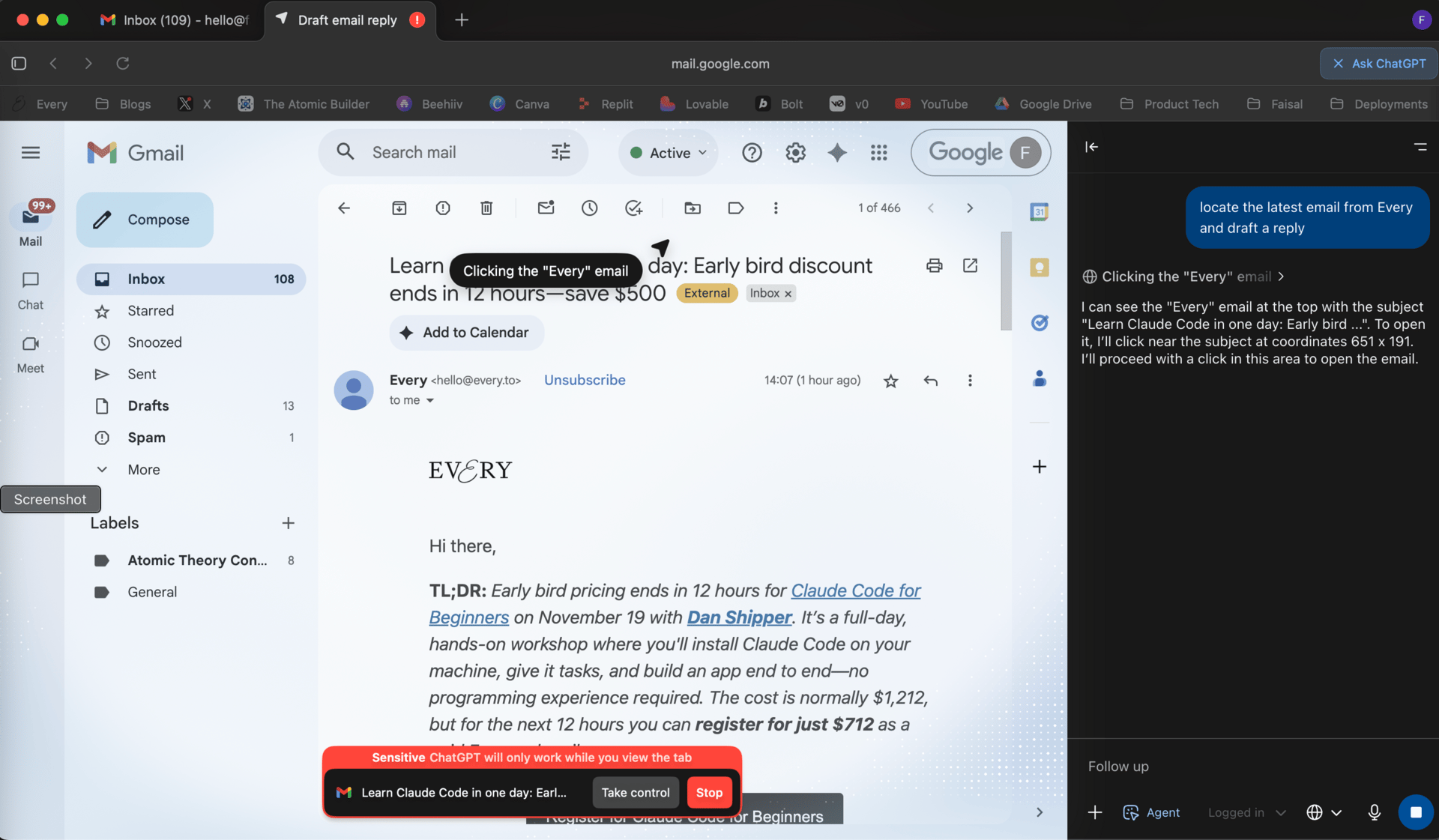
Agent mode locating an email and preparing a draft response
My Take (For Builders, PMs, and Execs)
If you're building products or leading teams, here are three things to start doing now:
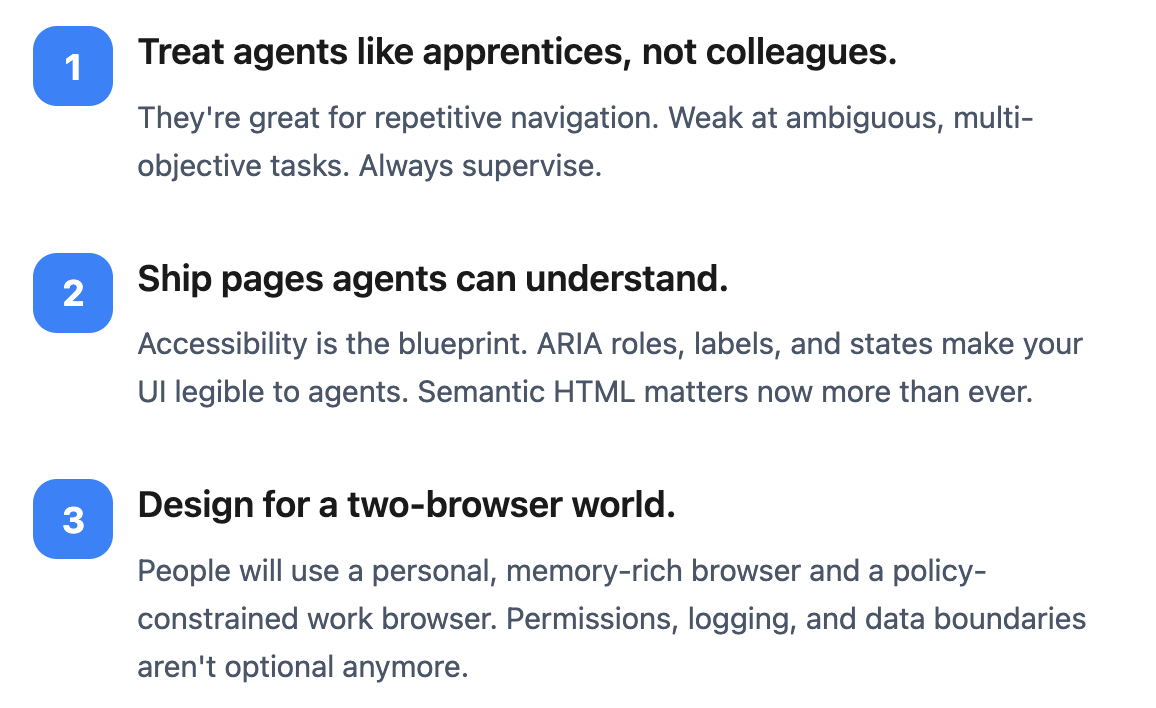
Three things to do today
Want to see what this looks like in practice? Here are some example workflows you can try this week - no setup required, just open Atlas and follow along.
Three Workflows to Try This Week
Try one (or all) of these workflows in Atlas to get a feel for how to use it.
1. Agent-Ready Audit of Your Site (25 min)
Make your product legible to both agents and humans.
Open a critical flow (signup, checkout, or docs)
Ask in the sidebar: "Audit this page for agent legibility: semantic HTML, ARIA roles/labels/states, stable selectors, accessible names."
Request fixes as code snippets
Ask for a 5-step agent task to validate: "Add to cart → confirm review page shows summary. Never auto-checkout."
Output: A list of fixes that improve accessibility and agent reliability.
Why this matters: Everything that makes your site agent-ready also makes it more accessible for humans. All your pages will have better foundations.
2. Competitor Narrative Snapshot (20–30 min)
Reverse-engineer what's working in your space.
Open each competitor's homepage, pricing page, and "Why us" section
Ask: "Extract their messaging pillars, proof types (logos, case studies, benchmarks), and the primary objection they're pre-empting."
Open your own page and ask: "Map our messaging against those pillars. Propose 3 test variants that address the gaps."
Output: A positioning heat-map showing where you're differentiated (or invisible), plus 3 copy variants ready to test.
Why this matters: Most positioning work dies in a Google Doc. This gets you from analysis to testable variants in one sitting.
3. Personal Retrieval That Actually Works (15 min)
Turn your browsing history into a searchable memory.
Toggle Browser Memories on (or set per-site visibility for specific domains)
Ask: "Pull the 5 roles I viewed last week and draft a 120-word 'why this matters to me' for each."
Edit, refine, and file
Output: Resurfaced links with tailored summaries pulled from your own browsing trail — no reconstruct-from-scratch required.
Why this matters: You've already done the research. This just surfaces it when you need it, in the format you need.
Guardrails: What Works Today & What to Ask Before You Roll This Out
Atlas gives you real controls today. But when you (eventually) evaluate this for a team or enterprise, you'll need to know what's available versus what you'll need to build around.
What You Can Control Today
Incognito Mode — Remember, when you're signed out of ChatGPT while browsing, chats and memory aren't saved to your account.
Per-site page visibility — Toggle whether ChatGPT can read a page (address-bar lock icon or Settings → Web browsing). When it's off, no new Browser memories are created for that site.
Browser memories are optional — View, archive, or clear them anytime. Delete your browsing history and the associated memories go too.
Model training is opt-in — "Include web browsing" is off by default in Data controls.
Agent Mode boundaries — Can't run code, download files, install extensions, or access other apps, your file system, saved passwords, or autofill.
Logged-out Agent Mode — Run agents without using your existing cookies or accounts.
Supervision features — The agent asks before many important actions. You can pause, interrupt, or take over anytime. Pages visited in Agent Mode aren't added to your history.
Bottom line: You can meaningfully reduce exposure today using Incognito, per-site visibility, logged-out agent runs, and selective Browser memories.
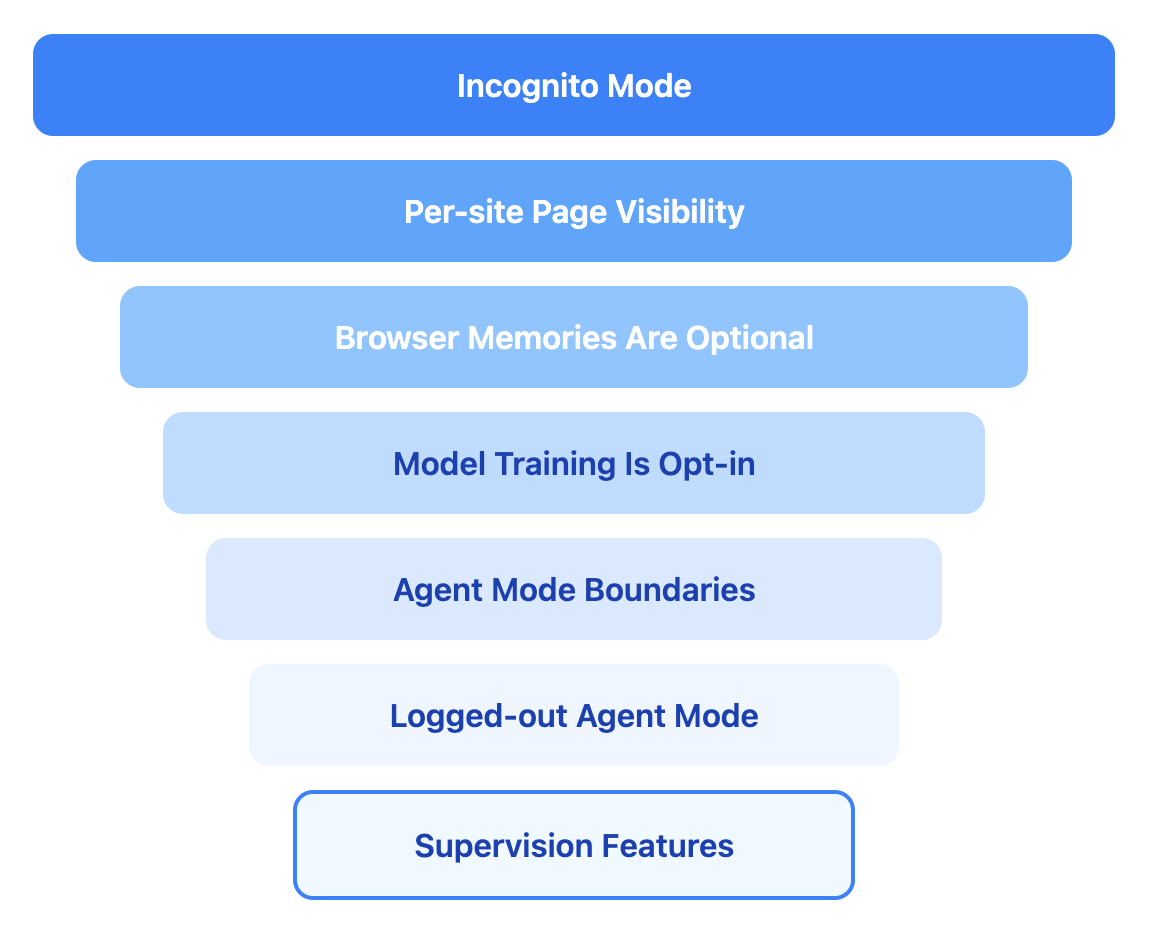
Multiple layers on control
Enterprise Due Diligence (Questions to Ask OpenAI)
If you plan to pilot this in an organisation, here's what to clarify:
Admin enforcement — Can we centrally enforce defaults? (Browser memories off, visibility disabled for finance/HR domains, Agent Mode restricted)
Auditability — Are full agent transcripts exportable for review? Is there an admin log of actions with domain, element, and timestamp?
Domain controls — Can we whitelist read-only sites versus action-allowed sites? (Example: "cart build allowed; checkout requires human")
SSO and policies — Do you support SSO, SCIM, policy APIs, data residency, MDM for managed devices?
Threat modeling — What protections exist for prompt injection and form-jacking? Can we safely run red-team tests with seeded pages and emails?
If these aren't available as centralized controls yet, treat them as process guardrails: run logged-out, scope tasks narrowly, supervise every run, and maintain a manual action log.
Make Your Web Based Products "Agent-Ready"
Here’s a 5 point checklist for your IT leads to ensure your web based products are ready for the world of agents.
Structure pages like documents — Use proper headings, lists, and tables. Avoid generic containers that all look the same to a machine.
Label everything clearly — Buttons should say what they do. Forms should explain what they're asking for. Menus should be obviously menus.
Separate building from buying — Let agents add items to a cart, but require human confirmation before checkout or any action that costs money or changes data.
Make things findable — Use consistent names and IDs. Prefer "next page" buttons over endless scrolling.
Set boundaries — Publish guidelines that tell agents what they can and can't do on your site, and how fast they can do it.
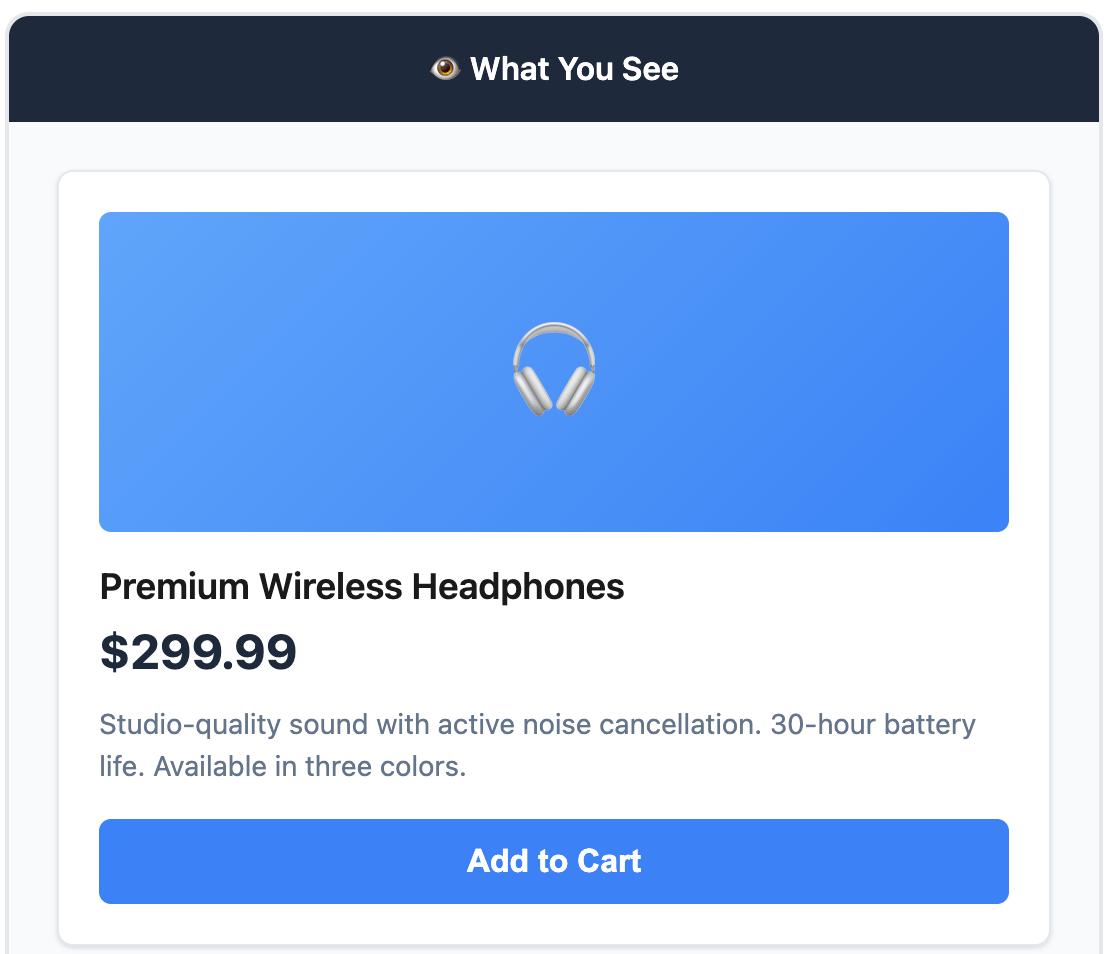 What you see on a website | 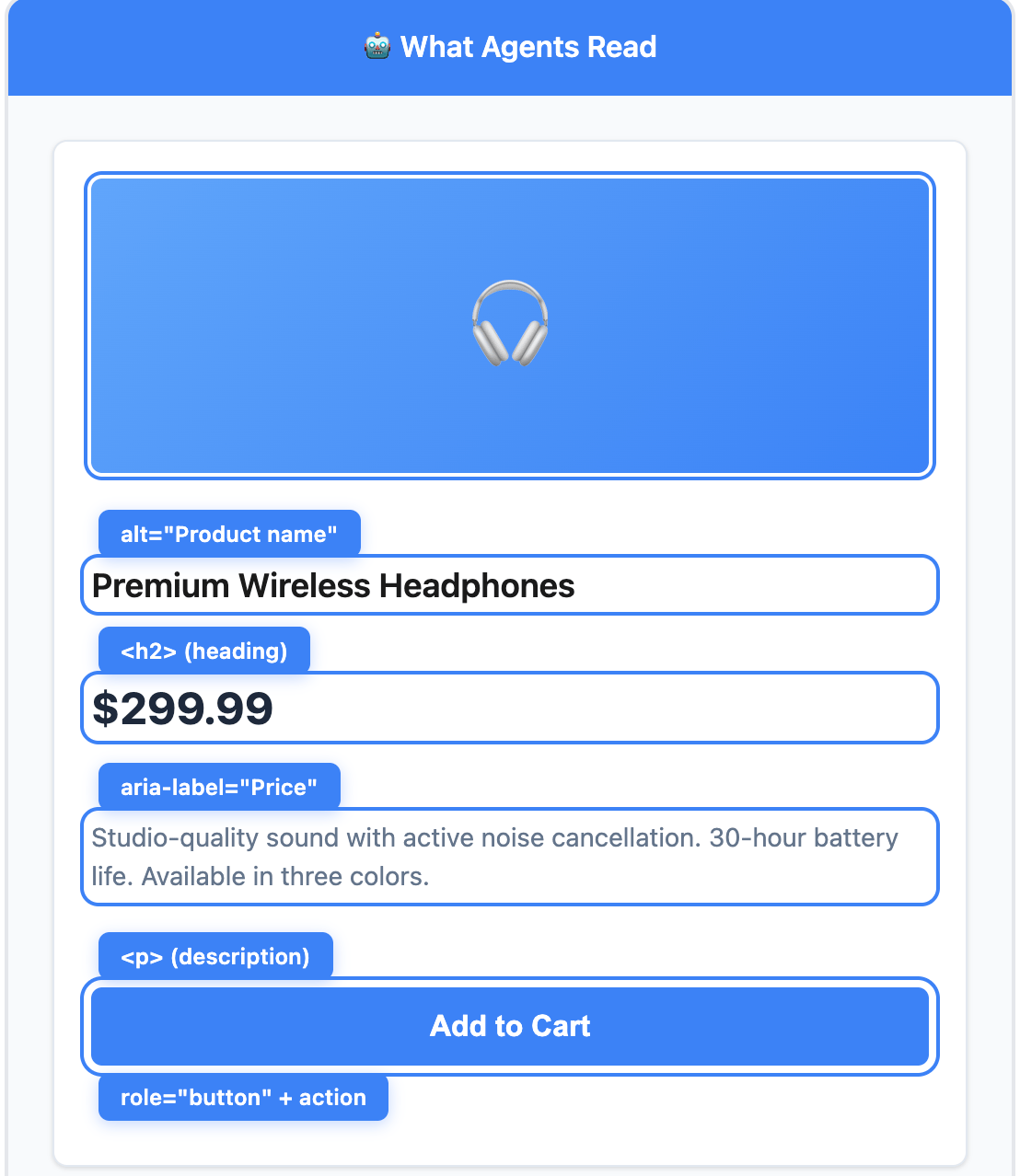 What an agent reads |
Bonus: Everything above also improves accessibility for humans. Win win!
Closing Thought
This wasn’t a surprise. OpenAI hired a senior engineering lead from the Google Chrome team a year ago, so this foray into the browser space has been coming. I’ll be watching to see the reaction when Windows and IOS devices get Atlas, as well as the types of enterprise controls that OpenAI makes available.
Google’s counter move will be interesting - I can’t imagine there won’t be some turbo charged version of Chrome with Gemini built in... Right?
For now, Atlas doesn't replace browsing, but it’s trying to remove friction between your intent and the work: think → gather → draft → edit — in one place.
Have you tried Atlas yet? I'm curious how your team is thinking about AI-native browsers - hit reply and let me know. The autonomy story will take time. The context story is happening right now! See you next week! Faisal |  |
P.S. Know someone else who’d benefit from this? Share this issue with them.
Received this from a friend? Subscribe below.
The Atomic Builder is written by Faisal Shariff and powered by Atomic Theory Consulting Ltd — helping organisations put AI transformation into practice.
